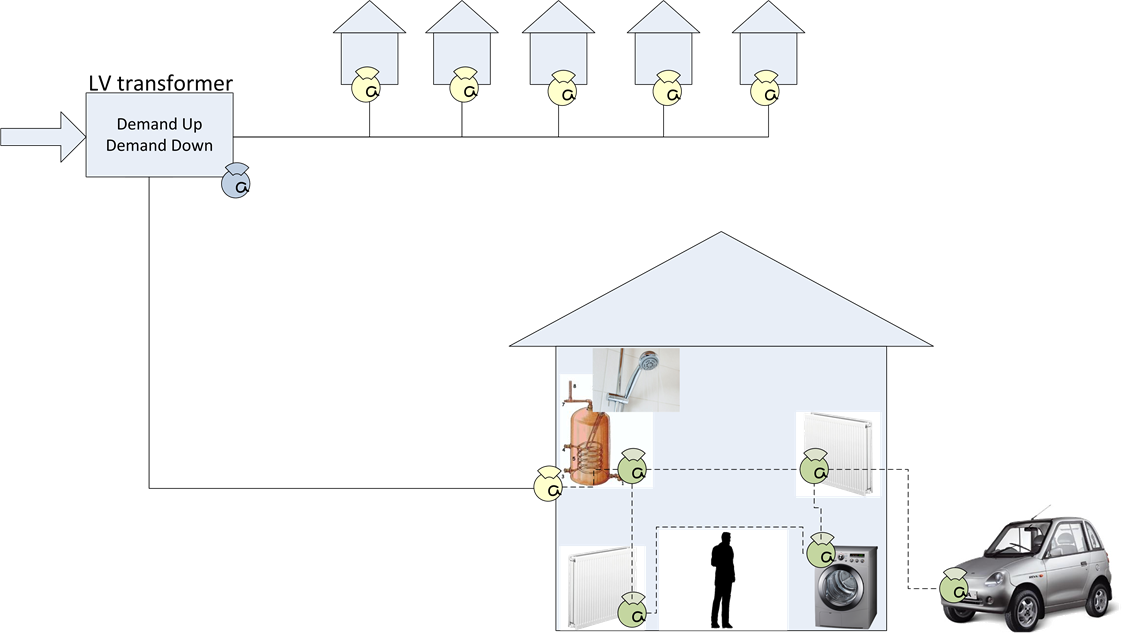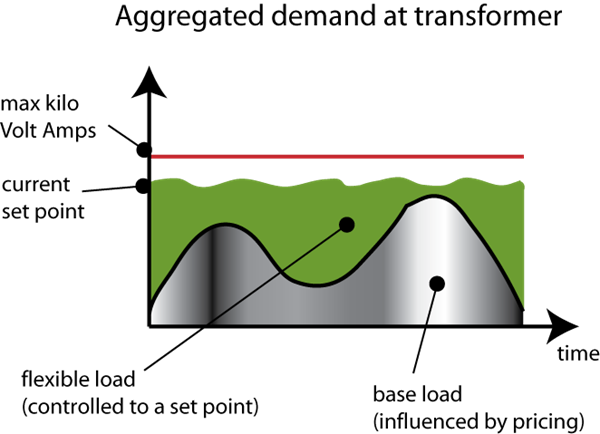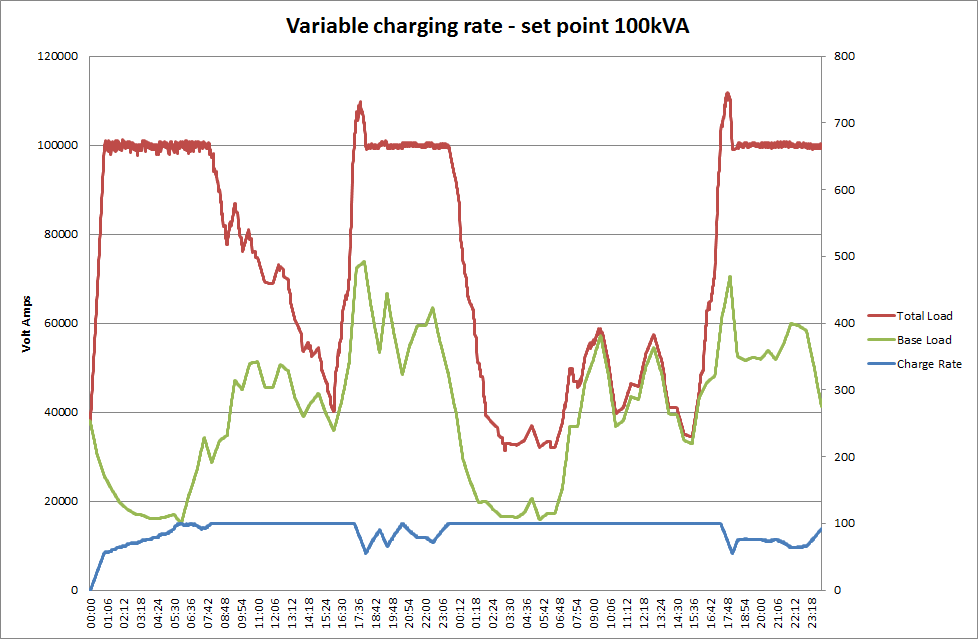Set Point Control for Charging of Electric Vehicles
Many countries envisage a future where renewable electricity is the predominant energy source. For example, Ireland’s smart grid roadmap has targets of 40% of electricity from renewables by 2020 and 80% by 2050. There will also be a significant increase in demand, mainly due to the electrification of vehicles and heating appliances. Achieving these targets will require new engineering solutions, and new ways of operating the grid.
Charging of Electric Vehicles
There has been considerable research in addressing the problem of charging electric vehicles (EVs) on a constrained distribution grid but no practical, cost-effective solution has been proposed to date.
Our approach proposes that there will be two types of demand, a base load which can be influenced by dynamic pricing and a more tightly controlled flexible load (e.g., EVs) that can be used to shape the overall aggregate demand.
We explore two algorithms that implement tight set point control for a set of EVs on a distribution feeder line.
Approach
Variable Charging Rate algorithm:
- This algorithm uses a variable (0-100%) EV charger.
- It broadcasts the charging rate (0-100%) at which each available EV should charge.
- The charging rate is ramped up or down so the aggregate demand tracks the given set point.
- The charger (0-100%) enables fine-grained control but it is expensive and causes power quality issues. Ideally, we want an algorithm that uses a simple (On-Off) EV charger.
Variable Connection Rate algorithm:
- This algorithm uses a simple (On-Off) EV charger.
- It broadcasts the connection rate (0-100% probability) at which each available EV should attempt to connect.
- This modulates the number of EVs connecting.
- The connection rate is ramped up or down to track the given set point.
Results
The two graphs show the control algorithms operating over a two day period. The charge/connection rates are shown in blue varying from 0% to 100%. The baseload is in green and shows the morning peak, evening peak and nighttime valleys. The controlled aggregate demand is shown in red and tracks the 100kVA set point when possible.
Conclusion
The variable charging rate tracks the set point well. The variable connection rate has similar results but with greater deviation from the set point. However, it uses the much simpler and more cost-effective (On-Off) EV charger.
People
Colin Harris, Ivana Dusparic, Edgar Galvan, Andrei Marinescu, Vinny Cahill, Siobhán Clarke




